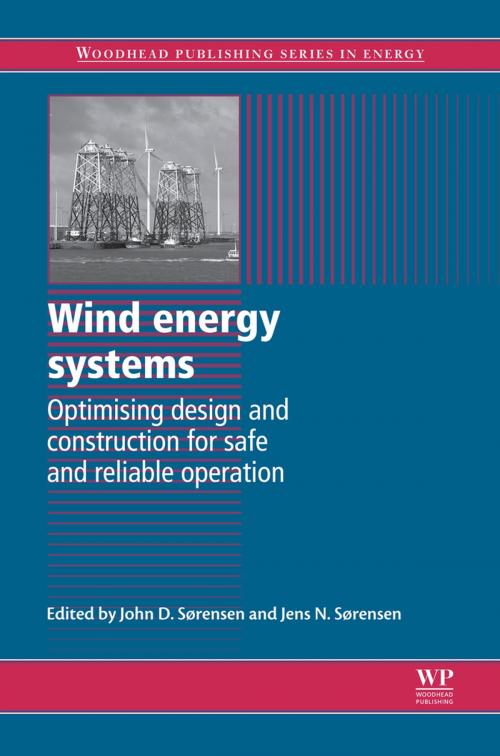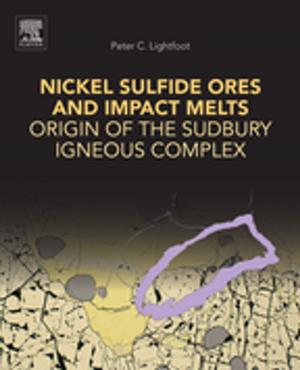Wind Energy Systems
Optimising Design and Construction for Safe and Reliable Operation
Nonfiction, Science & Nature, Technology, Power Resources| Author: | ISBN: | 9780857090638 | |
| Publisher: | Elsevier Science | Publication: | December 20, 2010 |
| Imprint: | Woodhead Publishing | Language: | English |
| Author: | |
| ISBN: | 9780857090638 |
| Publisher: | Elsevier Science |
| Publication: | December 20, 2010 |
| Imprint: | Woodhead Publishing |
| Language: | English |
Large-scale wind power generation is one of the fastest developing sources of renewable energy and already makes a substantial contribution to power grids in many countries worldwide. With technology maturing, the challenge is now to increase penetration, and optimise the design, construction and performance of wind energy systems. Fundamental issues of safety and reliability are paramount in this drive to increase capacity and efficiency.
Wind energy systems: Optimising design and construction for safe and reliable operation provides a comprehensive review of the latest developments in the design, construction and operation of large-scale wind energy systems, including in offshore and other problematic environments.
Part one provides detailed coverage of wind resource assessment and siting methods relevant to wind turbine and wind farm planning, as well as aeroelastics, aerodynamics, and fatigue loading that affect the safety and reliability of wind energy systems. This coverage is extended in part two, where the design and development of individual components is considered in depth, from wind turbine rotors to drive train and control systems, and on to tower design and construction. Part three explores operation and maintenance issues, such as reliability and maintainability strategies and condition monitoring systems, before discussing performance assessment and optimisation routes for wind energy systems in low wind speed environments and cold climates. Part four reviews offshore wind energy systems development, from the impact of environmental loads such as wind, waves and ice, to site specific construction and integrated wind farm planning, and of course the critical issues and strategies for offshore operation and maintenance.
With its distinguished editors and international teams of contributors, Wind energy systems is a standard reference for wind power engineers, technicians and manufacturers, as well as researchers and academics involved in this expanding field.
- Reviews the latest developments in the design, construction and operation of large-scale wind energy systems
- Offers detailed coverage of wind resource assessment and siting methods relevant to wind turbine and wind farm planning
- Explores operation and maintenance issues, such as reliability and maintainability strategies and condition monitoring systems
Large-scale wind power generation is one of the fastest developing sources of renewable energy and already makes a substantial contribution to power grids in many countries worldwide. With technology maturing, the challenge is now to increase penetration, and optimise the design, construction and performance of wind energy systems. Fundamental issues of safety and reliability are paramount in this drive to increase capacity and efficiency.
Wind energy systems: Optimising design and construction for safe and reliable operation provides a comprehensive review of the latest developments in the design, construction and operation of large-scale wind energy systems, including in offshore and other problematic environments.
Part one provides detailed coverage of wind resource assessment and siting methods relevant to wind turbine and wind farm planning, as well as aeroelastics, aerodynamics, and fatigue loading that affect the safety and reliability of wind energy systems. This coverage is extended in part two, where the design and development of individual components is considered in depth, from wind turbine rotors to drive train and control systems, and on to tower design and construction. Part three explores operation and maintenance issues, such as reliability and maintainability strategies and condition monitoring systems, before discussing performance assessment and optimisation routes for wind energy systems in low wind speed environments and cold climates. Part four reviews offshore wind energy systems development, from the impact of environmental loads such as wind, waves and ice, to site specific construction and integrated wind farm planning, and of course the critical issues and strategies for offshore operation and maintenance.
With its distinguished editors and international teams of contributors, Wind energy systems is a standard reference for wind power engineers, technicians and manufacturers, as well as researchers and academics involved in this expanding field.
- Reviews the latest developments in the design, construction and operation of large-scale wind energy systems
- Offers detailed coverage of wind resource assessment and siting methods relevant to wind turbine and wind farm planning
- Explores operation and maintenance issues, such as reliability and maintainability strategies and condition monitoring systems















